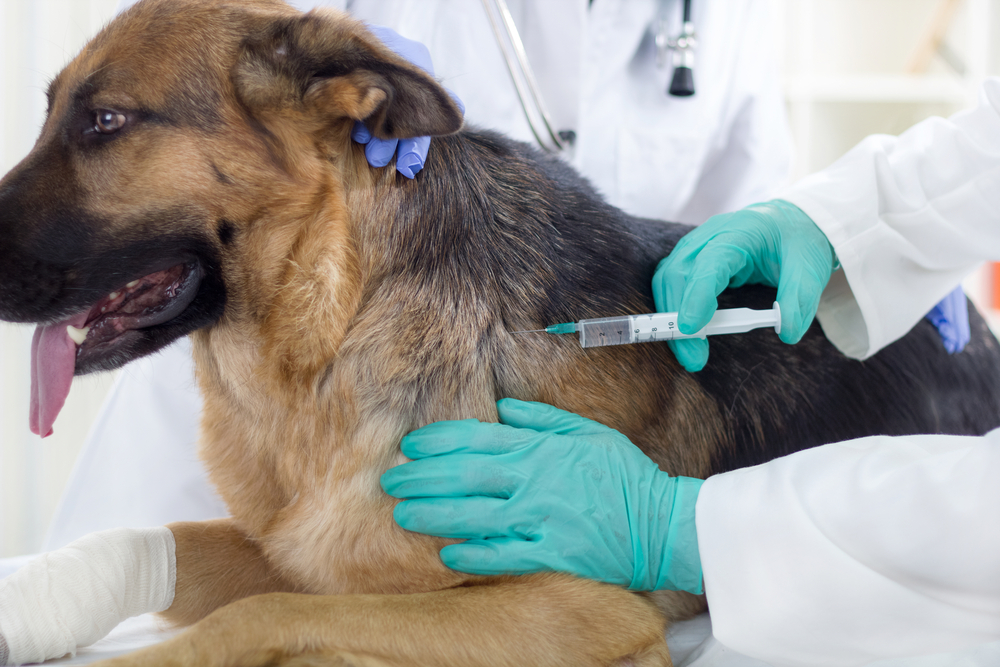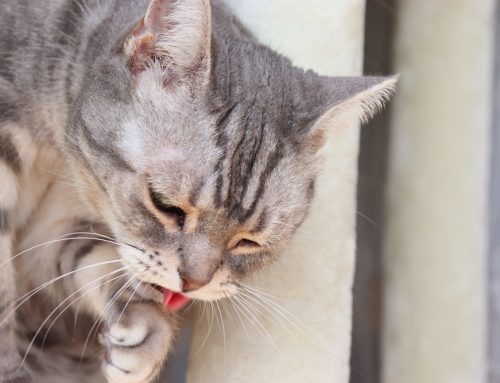According to the American Heartworm Society, the top five states in heartworm incidence are Mississippi, Louisiana, South Carolina, Arkansas, and Alabama. While the disease is prevalent in the Cotton State, heartworms can easily be prevented. Our team at Tidmore Veterinary Hospital wants to provide information about what dangers heartworms pose for your pet, and how you can safeguard your four-legged friend.
Mosquitoes transmit heartworms to pets
Alabama is home to approximately 60 mosquito species, and these parasites are responsible for transmitting heartworms to your pet. When a mosquito takes a blood meal from a pet or wild animal with baby heartworms (i.e., microfilariae) in their bloodstream, the mosquito ingests the parasites. Once inside the mosquito, the microfilariae mature to a larval stage that can be transmitted to another pet or animal. Once they reach larval stage three, they are deposited in the mosquito’s saliva. The next time the insect takes a blood meal from a pet or wild animal, as long as conditions are warm and humid, like they frequently are in Alabama, the larvae swim through the saliva, enter the bite wound, and infect the new host.
Heartworms infect dogs
When the third stage larvae enter the dog’s skin, they mature to larval stage five, and are ready to travel to the dog’s heart and lungs. Since dogs are natural heartworm hosts, the parasites can complete their life cycle inside the dog. This means that the heartworms can mature to adulthood, mate, and produce offspring. The heartworms can start producing offspring about five to seven months after infection, but the dog is damaged before the heartworm babies make their appearance. When the stage five larvae reach the lung vasculature, the dog’s immune system mounts an inflammatory response that progresses when the larvae mature to the next phase, and release a bacteria that further triggers an inflammatory response. This excessive inflammation leads to scarring of the lung vasculature, making pumping blood through the vessels difficult. The dog’s heart struggles against this high resistance, and eventually is no longer able to effectively pump blood throughout the body, leading to heart failure. Surprisingly, most dogs don’t exhibit signs as the parasites take up residence and start a family in their heart and lungs, but as the damage progresses, signs include a mild, persistent cough, increased tiredness, an inability to exercise at their previous level, and weight loss. Some dogs may suddenly collapse and die if the worm population causes a heart blockage, a condition called caval syndrome.
Heartworms infect cats
While heartworm infection in cats isn’t as prevalent as in dogs, cats are still highly susceptible to heartworm infection, and living indoors does not exempt a cat from being at risk. In fact, about 30% of feline heartworm cases occur in indoor-only cats. Cats are atypical hosts for heartworms, so the parasites affect them differently than dogs. When the stage five larvae enter the cat’s lungs, typically about 75 to 90 days after infection, the cat’s immune system reacts violently, causing a massive lung inflammation (i.e., heartworm associated respiratory disease [HARD]) that results in coughing, difficulty breathing, and vomiting.
Heartworms typically don’t live to adulthood in cats, but in some cases one or two adult worms can live in the heart. The cat’s small heart means only a small number of worms can cause heart blockage, leading to collapse, and possibly sudden death. Another complication seen in cats with heartworm disease is a saddle thrombosis, which occurs when a blood clot, caused by the turbulence in the heart, lodges in the aorta where the vessel branches to supply the cat’s hind limbs. Then, the cat experiences sudden paralysis in one or possibly both hind limbs.
Heartworm treatment is challenging in pets
In dogs, heartworm treatment must be handled extremely carefully, because aggressively treating the affected dog can result in many worms dying off quickly. Dead worms may seem like a good thing, but too many can cause a severe inflammatory response that can be fatal for the dog. When a dog is diagnosed with heartworms, the first step is to restrict their activity, since exercise can increase the damage the parasites cause to their heart and lungs. Next, their condition is stabilized to ensure they are as healthy as possible before treatment begins. Heartworm treatment for dogs entails a series of injections to gradually kill the worms and the larvae.
In cats, no approved heartworm treatment is available, and their condition must be managed by controlling the inflammation as much as possible, and preventing further parasitization.
Heartworm disease is preventable in pets

Controlling mosquito populations around your home by eliminating standing water, cleaning your gutters, emptying your swimming pool when not in use, and stocking decorative pools with fish that eat mosquito larvae, can help protect your pet from infection. But, the best way to prevent heartworm disease is to provide your pet with year-round heartworm prevention medication. Options include:
- Topical medications — Spot-on monthly treatments can protect your pet from heartworm disease, and against other parasites, as well.
- Oral medications — A chewable pill can be given monthly if you want to avoid the mess of spot-on treatments, and these products also protect against other parasites.
- Injectable medications — If you don’t want to have to remember to treat your pet every month, a veterinary professional can give them an injectable medication every 6 to 12 months. These products are only available for dogs.
Ensure your pet is protected from heartworm disease before Alabama’s hot, humid summer arrives. If your pet needs a heartworm test, contact our team at Tidmore Veterinary Hospital, so we can get them started on a heartworm preventive as soon as possible.








Leave A Comment